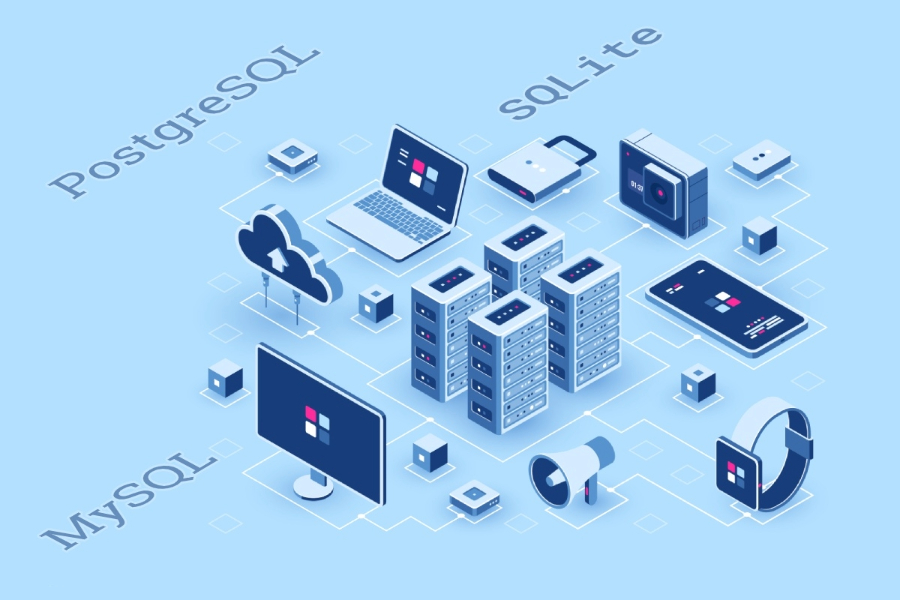Choosing Between PostgreSQL, MariaDB, and SQLite
Selecting the right database management system can be overwhelming. Understanding the strengths of PostgreSQL, MariaDB, and SQLite will empower you to make the right choice for your unique requirements.
PostgreSQL
PostgreSQL is an advanced open-source DBMS known for its robustness and scalability. It offers a wide range of features, making it suitable for demanding applications. One of its key strengths lies in its advanced data integrity and concurrency control mechanisms, ensuring data consistency and reliability. PostgreSQL is also renowned for its support for complex queries and various data types, making it a favored choice for applications with intricate data models. Its robust transactional support and scalability options make it suitable for high-traffic applications and data warehousing scenarios. For example, a large e-commerce platform with millions of transactions per day can benefit from PostgreSQL’s capabilities to handle concurrent writes and complex data relationships.
MariaDB
MariaDB, a fork of MySQL, has become a popular choice among developers due to its compatibility with MySQL and improved performance. Its seamless migration process from MySQL makes it an attractive option for those looking to switch. MariaDB offers high availability and scalability options, allowing businesses to handle increasing workloads effectively. Web applications and content management systems (CMS) often leverage MariaDB for its reliability and performance. For instance, a blogging platform powered by MariaDB can handle many concurrent user requests, ensuring a smooth user experience. Additionally, e-commerce platforms rely heavily on MariaDB for its transactional support and ACID compliance, ensuring data consistency in online transactions.
SQLite
SQLite differentiates itself by offering a lightweight, serverless, and embedded architecture. It requires minimal configuration and has a small memory footprint, making it ideal for resource-constrained environments. SQLite is commonly used in mobile applications and IoT devices, where small size and efficiency are crucial. For example, a mobile app that needs a local database for caching data can utilize SQLite to efficiently store and retrieve information on the device. Moreover, SQLite serves as an excellent choice.
Comparison of Postgre SQL, MariaDB, and SQLite
Allowing developers to quickly set up and test their applications without the need for complex database server setups.
Comparison of PostgreSQL, MariaDB, and SQLite Now that we have explored the individual strengths of PostgreSQL, MariaDB, and SQLite, let’s compare them to identify the most suitable DBMS for different scenarios.
Performance: When it comes to performance, PostgreSQL stands out due to its robust architecture and optimization techniques. It efficiently handles complex queries and large data volumes, making it ideal for data-intensive applications. MariaDB also offers excellent performance, especially in scenarios where compatibility with MySQL is required SQLite, with its lightweight design, excels in scenarios with low resource availability and where simplicity is prioritized over high performance.
Scalability and high availability: Both PostgreSQL and MariaDB provide options for scaling horizontally and vertically, ensuring high availability and fault tolerance. They can handle large data sets, and support replication and clustering mechanisms. In contrast, SQLite is not designed for high scalability or distributed architectures. It is more suited for single-user or small-scale applications that do not require extensive scalability.
Data types and querying capabilities: PostgreSQL offers extensive support for various data types, including custom types,
Benefits
PostgreSQL
Robustness and scalability: PostgreSQL is known for its ability to handle large and complex data sets, making it a good choice for enterprise-level applications. It can also be scaled up or down to meet the changing needs of your application.
Feature-rich: PostgreSQL offers a wide range of features, including advanced data types, sophisticated query capabilities, and strong support for ACID compliance.
Data integrity: PostgreSQL’s strong data integrity features, such as its advanced concurrency control mechanisms and its support for multiple isolation levels, help to ensure that your data remains consistent and reliable.
Compatibility with MySQL: MariaDB is a fork of MySQL, so it is highly compatible with existing MySQL applications. This makes it a good choice for projects that need to migrate from MySQL to a different database.
Performance: MariaDB offers good performance for web applications and transactional applications. It can handle moderate data volumes and concurrency levels.
Ease of use: MariaDB is relatively easy to learn and use, making it a good choice for projects with limited database expertise.
SQLite
Lightweight and embeddable: SQLite is a very lightweight database, making it a good choice for applications that need a small footprint. It can be embedded directly into your application, so there is no need to install and manage a separate database server.
Simple and portable: SQLite is very simple to use and deploy. It is also portable, so it can be used on a wide range of platforms, including Windows, Linux, macOS, iOS, and Android.
Fast performance: SQLite is a very fast database, making it a good choice for applications that need quick data access.
Source
- https://www.digitalocean.com/community/tutorials/sqlite-vs-mysql-vs-postgresql-a-comparison-of-relational-database-management-systems
- https://db-engines.com/en/system/MariaDB%3BPostgreSQL%3BSQLite

